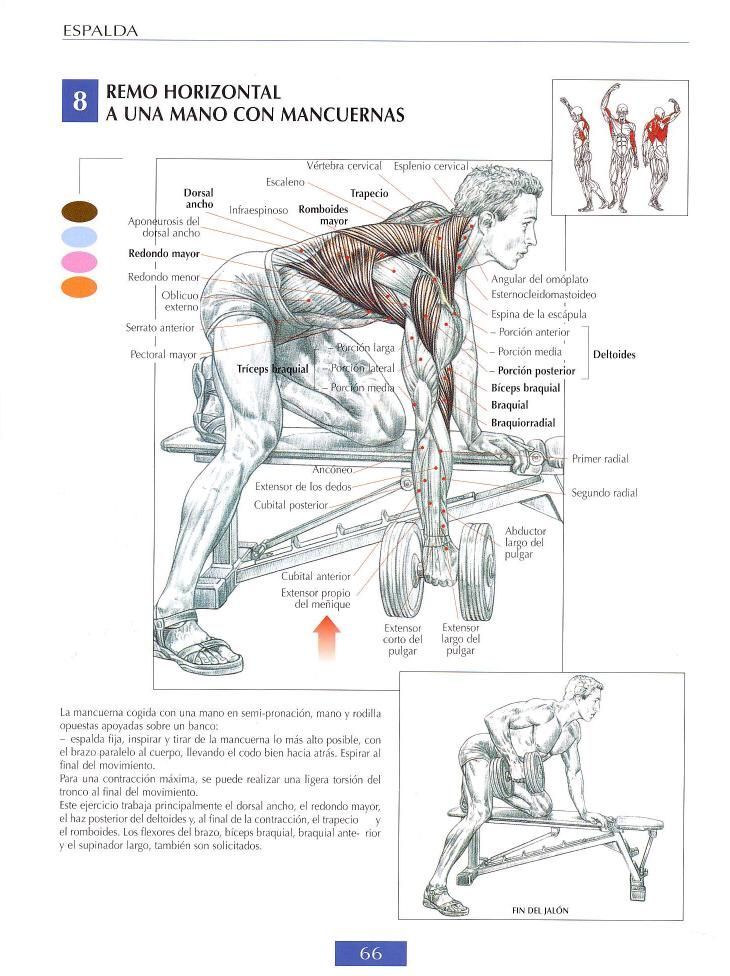Why is the dumbbell row considered one of the most effective exercises for building back muscles? This question has been on the minds of fitness enthusiasts and bodybuilders alike. The dumbbell row, also known as the single-arm dumbbell row, targets the latissimus dorsi, trapezius, rhomboids, and other stabilizing muscles in the back. It's a compound movement that not only strengthens the upper body but also enhances core stability and posture. By incorporating this exercise into your routine, you can develop a well-rounded physique while improving overall functional strength.
The dumbbell row stands out due to its versatility and effectiveness. Unlike machine-based exercises, it requires balance and coordination, engaging multiple muscle groups simultaneously. This engagement promotes better muscle activation and growth. Furthermore, because it allows unilateral training—working each side independently—it helps address muscle imbalances, ensuring symmetrical development across both sides of the body. For those seeking to build muscle mass or enhance athletic performance, mastering the dumbbell row technique is essential.
| Personal Information | |
|---|---|
| Name | Dumbbell Row Exercise |
| Primary Muscle Group | Latissimus Dorsi |
| Secondary Muscle Groups | Trapezius, Rhomboids, Biceps, Forearms |
| Type of Exercise | Compound Movement |
| Equipment Required | Dumbbells, Bench (optional) |
| Benefits | Strengthens back muscles, improves posture, enhances core stability |
| Reference Website | HSN Guía Ejercicios |
To execute the dumbbell row effectively, start by selecting an appropriate weight that challenges you without compromising form. Begin with your feet shoulder-width apart, bending slightly at the knees. Place one hand on a stable surface like a bench for support if needed, keeping your spine neutral throughout the movement. With the opposite arm holding the dumbbell, initiate the pull by retracting your shoulder blade before lifting the weight toward your ribcage. Ensure that your elbow stays close to your body during the lift. Pause briefly at the top of the motion before lowering the dumbbell back down under control.
Variations of the dumbbell row offer additional ways to challenge different aspects of your workout regimen. One popular variation involves performing the exercise from a standing position rather than using a bench for support. Another option includes alternating arms after each repetition instead of completing all reps on one side first. These modifications can keep workouts dynamic while targeting specific areas more intensely. Additionally, incorporating pauses mid-repetition increases time under tension, further stimulating muscle growth.
For optimal results, focus on maintaining proper form over heavier weights. Rushing through movements or allowing momentum to take over diminishes the effectiveness of the exercise and increases injury risk. Instead, prioritize slow, controlled motions that emphasize full range of motion. Beginners might benefit from starting with lighter dumbbells until they become comfortable with the mechanics of the movement. As proficiency improves, gradually increase resistance levels to continue progressing.
Another critical aspect of executing the dumbbell row successfully lies in breathing patterns. Inhale deeply just before initiating the pull, then exhale forcefully as you bring the dumbbell upward. Proper breathing synchronizes with muscular contractions, providing greater power output and reducing fatigue. Moreover, paying attention to alignment ensures maximum engagement of target muscles while minimizing strain elsewhere. Keep shoulders squared, chest proud, and head facing forward throughout the set.
Beyond physical benefits, the dumbbell row contributes positively to mental health by fostering discipline and perseverance. Consistently challenging oneself to improve technique and lift progressively heavier loads builds resilience and determination. Such qualities translate beyond the gym into everyday life scenarios requiring problem-solving skills and adaptability. Thus, integrating this exercise into regular routines offers holistic advantages extending far beyond mere aesthetics.
When planning workouts featuring the dumbbell row, consider pairing it with complementary exercises targeting similar muscle groups. Examples include pull-ups, chin-ups, bent-over rows, and face pulls—all designed to strengthen upper back musculature comprehensively. Structuring sessions around supersets or circuits combining these activities maximizes efficiency within limited workout durations. Furthermore, alternating between higher-repetition sets aimed at endurance and lower-repetition efforts focused on strength creates balanced programming suited to various goals.
Common mistakes made during dumbbell rows often stem from improper setup or execution techniques. Allowing excessive rounding of the lower back places undue stress on lumbar vertebrae, potentially leading to injuries. Similarly, flaring elbows outward reduces emphasis on intended muscle fibers while increasing joint discomfort. To avoid such pitfalls, practice mindfulness about positioning and movement paths consistently. Recording video footage of sessions provides valuable feedback regarding areas needing adjustment.
Incorporating the dumbbell row into your fitness journey promises substantial rewards when approached diligently. Its capacity to sculpt powerful backs coupled with improved postural integrity makes it indispensable among strength-training staples. Whether striving for competitive athletics success or simply enhancing personal wellness, embracing this foundational exercise enriches every aspect of physical capability. Remember always to listen to your body, respecting limits while pushing boundaries safely.
As demonstrated above, the dumbbell row serves as a cornerstone exercise worthy of inclusion in any serious lifter’s arsenal. By adhering to recommended practices outlined here, individuals can harness its full potential toward achieving desired outcomes efficiently. Embrace the challenge posed by mastering this movement, knowing the effort invested yields lasting dividends across numerous dimensions of health and vitality.



